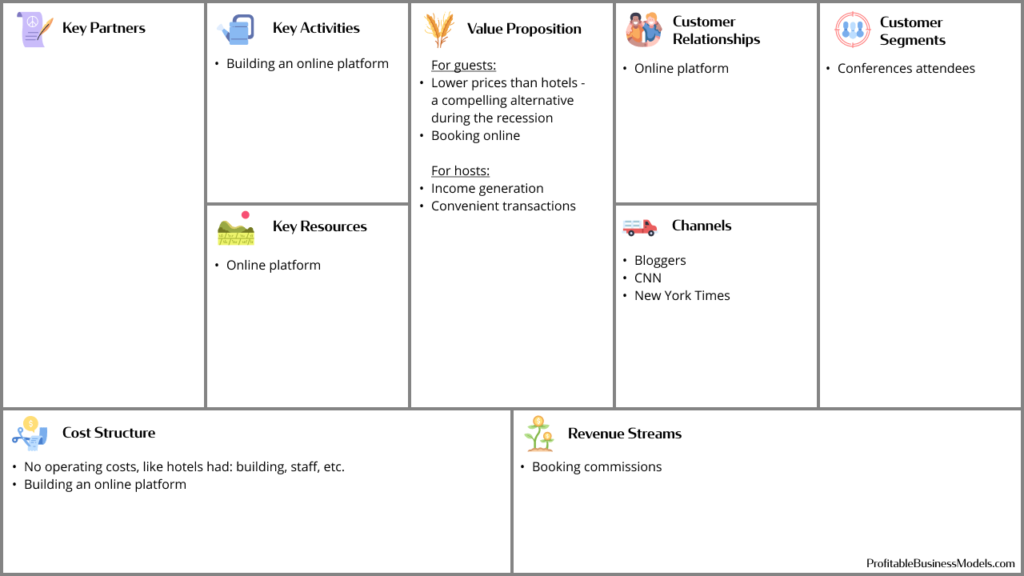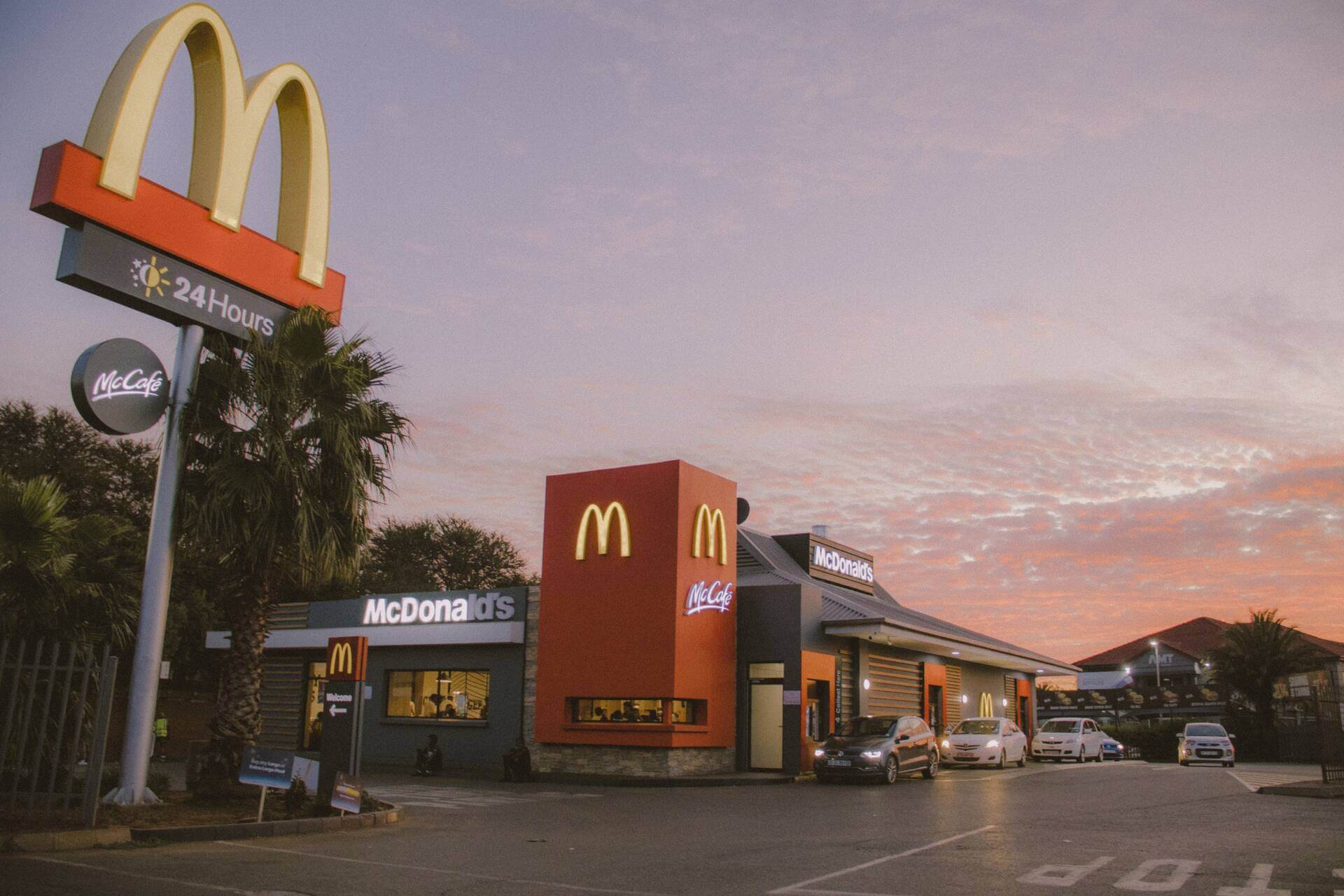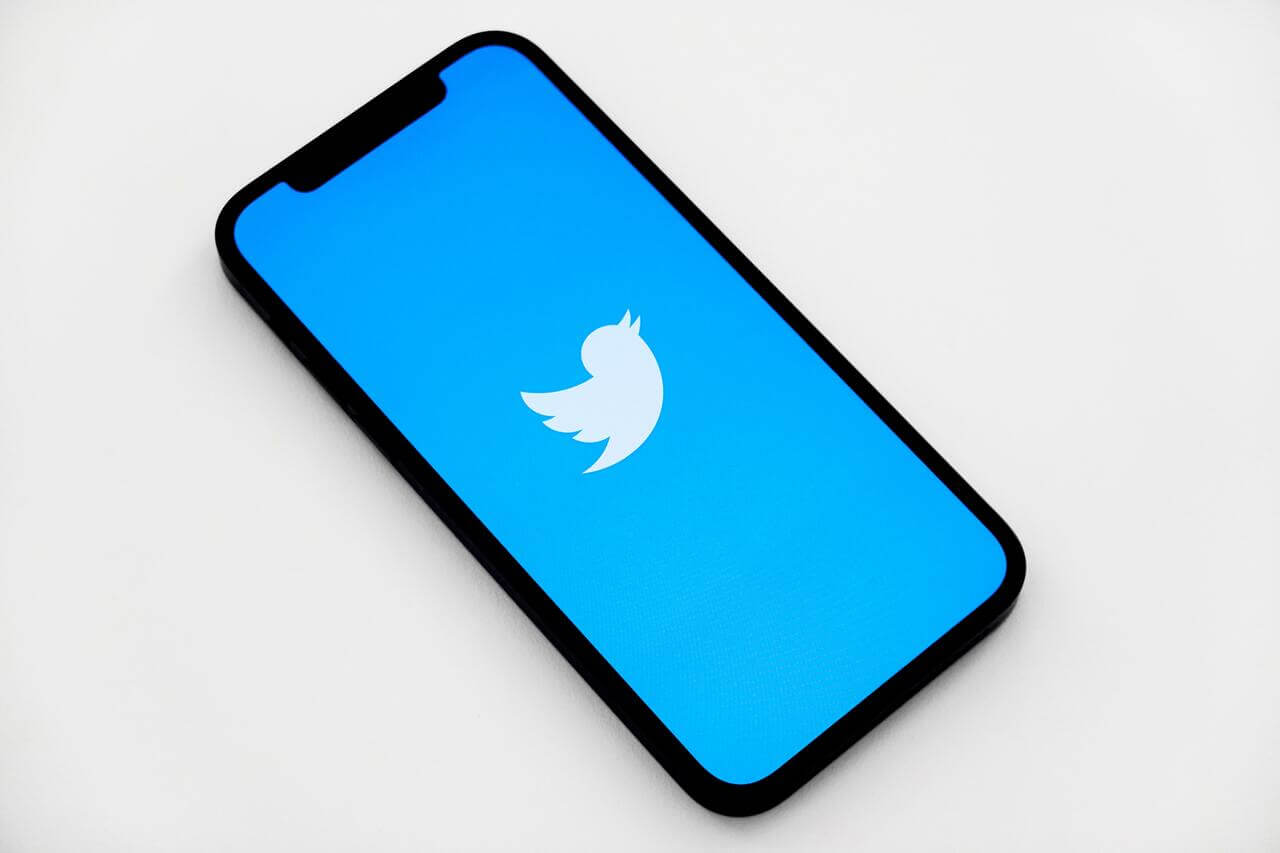Big companies rarely end up with the same business model as when they’d started. This article is part 1 of the series of Airbnb’s Business Model Canvas Evolution.
- Airbnb’s Business Model Canvas (part 1): Where The Idea Came From
- Airbnb’s Business Model Canvas (part 2): The Prototype of The Online Booking Platform
- Airbnb’s Business Model Canvas (part 3): Early Days
- Airbnb’s Business Model Canvas (part 4): Expansion
- Airbnb’s Business Model Canvas (part 5): Becoming An Entire Hospitality Brand
2008-2010: Some false starts, rejection, and eventual takeoff
2008: Early Growth & Lack of Investor Confidence
Gebbia and Chesky needed money to kickstart their business. Blecharczyk worked on the site and redesigned the platform so that booking would only take three clicks. In March, they officially launched during the SXSW Conference and only had two bookings; one of them was Chesky.
This didn’t deter them because they knew there was a market for the idea. Air bed and breakfast offered something different compared to what hotel chains and other listing sites like booking.com, Priceline, and Vrbo were offering.
The Airbnb business plan had a lighter cost structure compared to competitors in the industry. How? By partnering with homeowners who would rent out their empty rooms in exchange for money. The company would make money by charging a percentage of the total amount on each transaction.
This type of cost structure would cancel out the need for the new business to incur operating costs such as acquiring buildings for accommodation and managing staff.
The trio was also hoping that the appeal for users would be access to an affordable bed and breakfast that felt like home. The country was in a recession, and people were looking for ways to spend less while traveling.
The idea was revolutionary because, up to this point, hotel chains and other vacation rentals were the go-to for travelers. Airbnb was offering a home-sharing experience that included extras like city tours.
Re-launching and re-launching
Despite their confidence in the business model, there were still a few more issues to iron out. One of the significant issues was figuring out how to get guests and hosts at the same time while expanding in different cities.
They shopped around for funding, meeting 15 angel investors who rejected the idea. Everyone thought they were crazy, and the business model was too risky. How could they guarantee the safety of the hosts or the travelers? There were too many loopholes for lawsuits.
The founders decided to fund the business using other means. They started using their credit cards and ended up with thousands of dollars in debt. Eventually, companies stopped giving them credit, and they were quickly running out of money.
In August 2008, they re-launched the website for the third time. This version of the website included a home page equipped with a search bar. It also had a section for listings, reviews, a payment system, and customer service. However, they still could not get people to book or to list their homes.
In November, the Democratic National Convention in Denver created a shortage that boosted sales. They tried to get the word out via the media, but all the news outlets they approached refused to write about them. Instead, they talked to bloggers who willingly wrote about the business. Eventually, CNN and the New York Times picked up the story, and they managed to get about 80 bookings.
However, this mild success was short-lived because after the event was over, they got no bookings at all. They were back at the starting line, but they were facing many challenges, unlike the first time.
Firstly they were thousands of dollars in debt and could not seem to secure any investor. They had tried to launch three times, and despite the national press, they had very few bookings. In fact, months would go by without a single customer. Lastly, one of the co-founders was getting married, and his fiancé didn’t want to live on the west coast. The future of the company was uncertain.
The lack of investors pushed the founders to think outside the box to raise capital. They bought cereal and used their design backgrounds to create some limited edition election-themed cereal boxes. The aptly named them Obama O’s and Cap’n McCain. They sold their cereal for $40 and raised $30 000 to help sustain their business and pay off some debts. The ship was sinking slowly, and they needed a big break. Fortunately, it arrived in 2009 in the form of the Y Combinator mentorship.

>> Read next article in the series: Airbnb’s Business Model Canvas (part 3): Early Days








